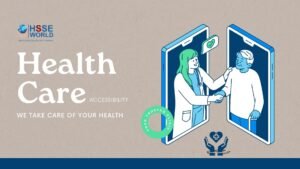Sun & UV radiation Exposure
3 min readToo much ultraviolet (UV) radiation exposure can cause sunburn, eye irritation, skin cancer, and blindness. UV radiation comes from many sources, but the sun is most common. Arc lights, welders, tanning beds, and water filtration systems may also emit harmful levels. Those working outside or around UV-emitting equipment should use caution to protect themselves from overexposure.

How workers are exposed
Many jobs expose workers to UV, including:
| Outdoors |
|
| Indoors |
|
The dangers to workers
Each person is unique and responds to UV radiation differently. For some, short-term exposure has no noticeable effect while others may develop more serious symptoms.
| Short-term exposure |
|
| Long-term exposure |
|
Workers have a higher risk of skin cancer if they:
- Have light-coloured skin, eyes, and hair
- Work, play, or exercise in the sun for long periods of time
- Had several blistering sunburns as a child
- Take drugs that make them more sensitive to UV light
How to reduce the risks
Be familiar with the outdoor UV index. It will tell you when the sun’s UV levels are high. When they are, you should avoid working in the sun or decrease the amount of time you spend outside.
It is important to use UV protection even if cloud, fog, or haze is blocking the sun. These things will lower the air temperature, but they do not block harmful UV rays from getting to you. Certain environments will increase your risk of UV exposure. Water, sand, concrete, and snow will reflect UV rays back at you and increase your UV exposure.
Eliminating the hazard by substituting a safer process or material, where possible, is the most effective control. Some questions to consider:
- Can workers avoid equipment that generates UV light?
- Can a process be used that does not expose workers to sun and UV?
Making physical modifications to facilities, equipment and processes can reduce exposure. Some questions to consider:
- Can damaged UV-emitting equipment, like halide lamps, be fixed immediately?
- Can guards and shields be used?
- Can work stations be sheltered or enclosed?
Changing work practices and work policies, awareness tools, and training can limit the risk of sun and UV exposure. Some questions to consider:
- Can warning signs be posted in the work area?
- Can maintenance schedules be increased for UV-emitting equipment?
- Can work shifts and breaks be schedules to reduce exposure times?
- Can workers be scheduled for indoor duties between 11 a.m. and 4 p.m., and when the UV rating is high?
This is the least effective control. It must always be used in addition to at least one other control. Some questions to consider:
- Do workers have the proper eye wear and protective clothing, as well as hats and sunscreen?
- Has personal protective equipment been verified to ensure it is working effectively?




1 thought on “Sun & UV radiation Exposure”